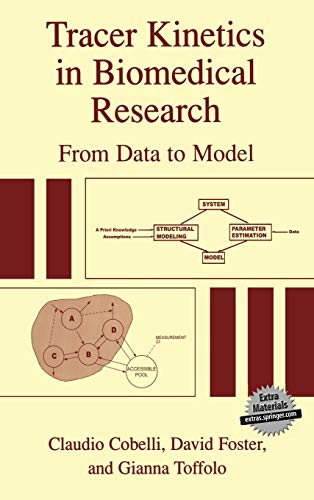
Free Download Tracer Kinetics in Biomedical Research: From Data to Model by Claudio Cobelli , David Foster , Gianna Toffolo
English | PDF | 2002 | 455 Pages | ISBN : 0306464276 | 46.2 MB
The use of mathematical modeling techniques in biomedical research is playing an increasingly important role in the understanding of the pathophysiology of disease processes. This includes not only understanding mechanisms of physiological processes, but also diagnosis and treatment. In addition, its introduction in the study of genomics and proteomics is key in understanding the functional characteristics of gene expression and protein assembly and secretion.
Finally, with the increasing complexity and associated cost of drug development, modeling techniques are being used to streamline the process. This book is designed to give the reader the mathematical and statistical information necessary to design tracer kinetic studies, to use noncompartmental methodologies and/or to develop multicompartmental models to interpret the data.
The book starts with a review of fundamentals of radioactive and stable isotope tracer kinetics and then proceeds with a description of the noncompartmental and multicompartmental modeling methodologies to study systems in the steady state. The focus is on understanding the basic assumptions inherent in the methodologies and the underlying mathematics and statistics, on discussing how to assess how `good' a model is and on giving some hints on how better to design kinetic studies, in order to increase the probability of a successful study and to ensure the maximal information content in the experimental data to be extracted. The book has an extensive section on parameter estimation, i.e., fitting models to data, first in general terms and then specifically related to noncompartmental and compartmental models. This is written from a basic point of view, and is intended to remove the mystery from the `black box' of computer optimization software. Finally, a special application often found in tracer kinetic analysis, precursor-product relationships, is discussed.
Throughout the book, the goal is to provide even the novice with sufficient background so that he/she can feel comfortable. A number of case studies, based upon real experimental data, are carried through the text. Other examples illustrate specific points. All data examples are provided on a floppy disk.
